Remembering People When Assessing And Transitioning The Workplace
The International Facility Management Association’s (IFMA) Facility Fusion conference is an annual gathering of industry innovators in the facility management world, exchanging ideas on the fast-paced, ever-changing nature of the workplace. As a specialist in change management, and one of the founding members of the Workplace Evolutionary leadership team for IFMA, I chose to present a topic I feel is a pertinent reminder of why we do what we do as workplace strategists, in a time of rampant technological advancement and aggressive shifts in the real estate market. In the end, it’s all about co-creating a better work experience, leading by example, and engaging people in the planning and design process in meaningful and timely ways with empathy. Forgetting about the end user in the process takes the eye off the target, misses key opportunities for engagement and can have a detrimental effect on the result.
In addressing “remembering the people” from a design perspective, I posed five simple questions:
- What are we designing?
- Why is “change” the verb?
- How do we engage people?
- When do we engage people?
- Who leads the change?
What are we designing?
The workplace is not a thing, it’s an experience! There’s been a fundamental shift in expectations about what we as designers are actually designing. This workplace evolution is best summarized as a shift from the workplace-as-a-product or thing (e.g., office building) to the workplace-as-a-service (ala WeWork) and currently toward the workplace-as-an-experience. So, we are now in the business of designing experiences which raises the bar on expected outcomes well beyond a product or a service, and redefines the involvement of end users as consumers in a co-creation process.
Why is “change” the verb?
When we hear the phrase “change management” most people understand it to mean managing change. Next time you hear the phrase “change management” simply reverse the verb and restate it as changing management! That’s what I mean by “change is the verb!” New work environments that support new work styles require new management styles. New management styles require leadership. Putting a hip or cool “work café” into a workplace solution will not be successful unless employees see managers leading the way by using it themselves. Management needs to model desired work behaviors. All eyes are upon what they do more so than what they may say. That’s why we emphasize new work behaviors with changing management style and behavior as the key element.
How do we engage people?
When trying to learn a new language, skill, or behavior, learning is accelerated when people can relate it to a topic about which they are passionate. Whether learning language, writing, reading, or math skills, this is referred to as interest-based learning. If we want people to adopt innovation or adapt their work behavior to a new environment, we need to understand their interests and concerns as individuals. Everyone is not affected by change in the same way, nor do they adapt at the same pace. So we need to identify stakeholders as audiences with unique interests and concerns. For example, managers moving out of dedicated private offices into an open plan environment are affected very differently than people already accustomed to working “in the open.” We need to engage people and their interests and concerns in ways customized to what’s uniquely at stake for them.
When do we engage people?
We strongly advocate the principle that the change management process must run from beginning to end in parallel and integrated with the design process. Change is not something we “sell” to end users once a design solution is already fully developed without their input. Genuine engagement must go well beyond persuasion and influence used to get people to accept innovative ideas involving new choices about how, when and where to work. The change process begins during the pre-design “programming” stage engaging end users in a dialogue about imagining alternative workplace solutions that better support the way they work. When people see their ideas reflected in proposed design concepts, they don’t need to be “sold” on new ideas.
Who leads the change?
Leading requires changing hats. Trying on a hat makes us more aware of what fit and style make us feel more or less comfortable. We have more to learn about why a hat makes us feel uncomfortable. Trying on hats other people wear allow us to understand them and ourselves better. When we think of hats we wear similar to roles we play, sometimes simply changing hats (or roles) requires empathy and makes all the difference in bringing about and being open to change. Whether you’re a designer embracing workplace as an experience, a manager embracing a new management style and modeling new work behaviors, a facility manager responsible for maintenance and operations, or any other player in the workplace creation process, we will all succeed more together by trying on the hats of others. This empathetic process is what we refer to as human-centered design. Mahatma Ghandi said it best… “You must be the change you want to see in the world.”
Fluid Retail: Experiential Entertainment
As retail continues to rapidly transform, we’re looking beyond the immediate industry, to environments and concepts inspiring the retail of tomorrow in our latest Fluid Retail series. Today’s consumers engage with brands in a fluid manner. The traditional sectors of the retail, restaurant, hospitality, and entertainment have blurred as the consumer-desired experience has become a mosaic of expectations, influenced heavily by engagement, access, and authenticity. Embracing these new expectations presents brands with a greater opportunity to differentiate, cross-sell and expand the breadth of their brand experience.
This segment will focus on entertainment concepts—from brand name skate parks, to experiential beauty studios, that have adapted to new consumer behaviors, paving the way for new experiences of the future (and while you’re here, check out other our other segments: Hospitality & Wellness and Food + Beverage):
RazerStore
Global gaming brands Razer has unveiled its first European flagship, a 3,700-square-foot space dedicated to interactive experiences. The distinctly dark two-floor space features a shop floor, play-test area where consumers can try out any combination of Razer’s gear, and lower ground floor gaming zone, complete with an enclosed streaming booth, connected consoles and ten battle stations. There will also be weekly tournaments, workshops, and boot camps in the future.
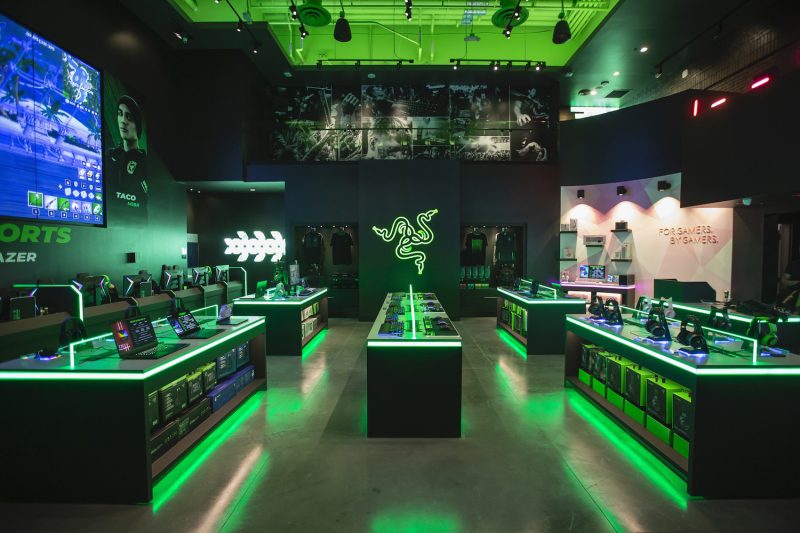
RazerStore, London, UK
Vans Skate Space
Vans Skate Space 198 was designed to offer a unique skate experience both beginner and experience boarders. As consumers flock to brand sponsored spaces, Vans hopes that the space will host competitions, art exhibits and music events in the future.
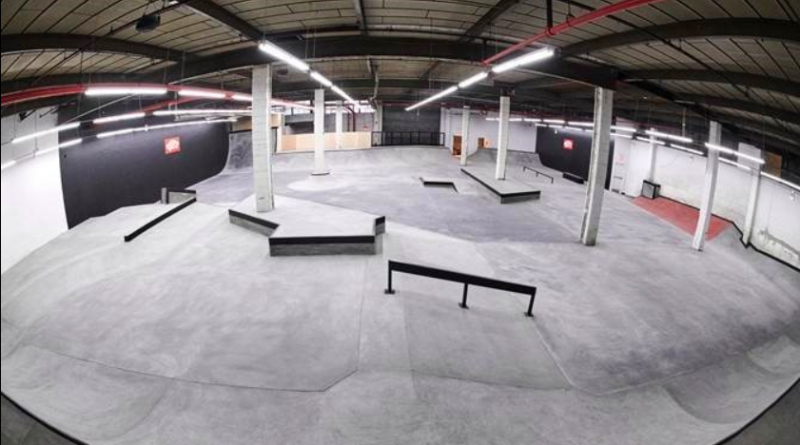
Vans Skate Space, Brooklyn, NYC
CAMP Flagship
Built to engage and inspire young families CAMP’s newest flagship location in Hudson Yards NYC has a canteen, an interactive space for play and shopping, and a theater for activities and programming for kids. Different from other CAMP stores that operate with rotating themes, this signature store features the brand’s BaseCAMP theme, bringing families the nostalgia of New England summer camps no matter the time of year.
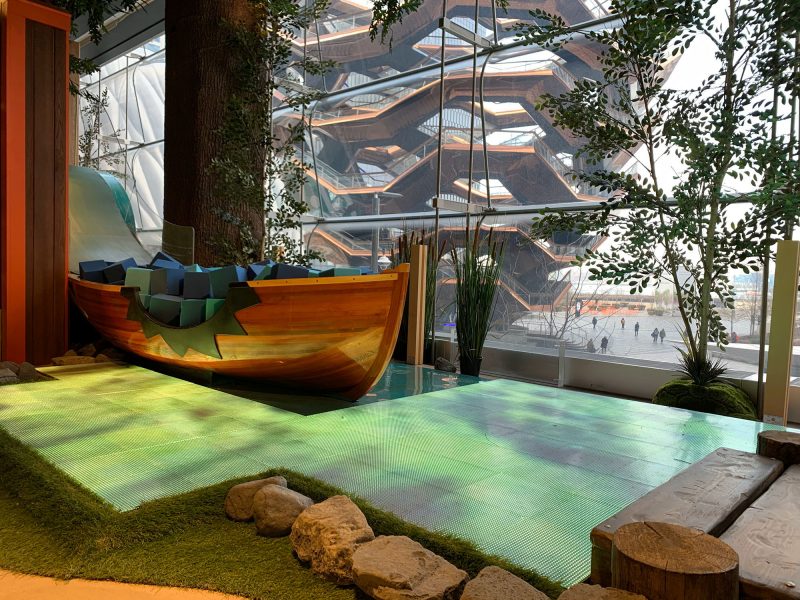
CAMP, Hudson Yards NYC
Zalando
European fashion e-retailer Zalando opened a Berlin Beauty Station to act as a multi-use store that doubles as an interactive art gallery, salon, or photography studio. Showcasing IRL tutorials and producing educational content for in-store tablets or online streaming, the store offers fans beauty focused entertainment experiences.
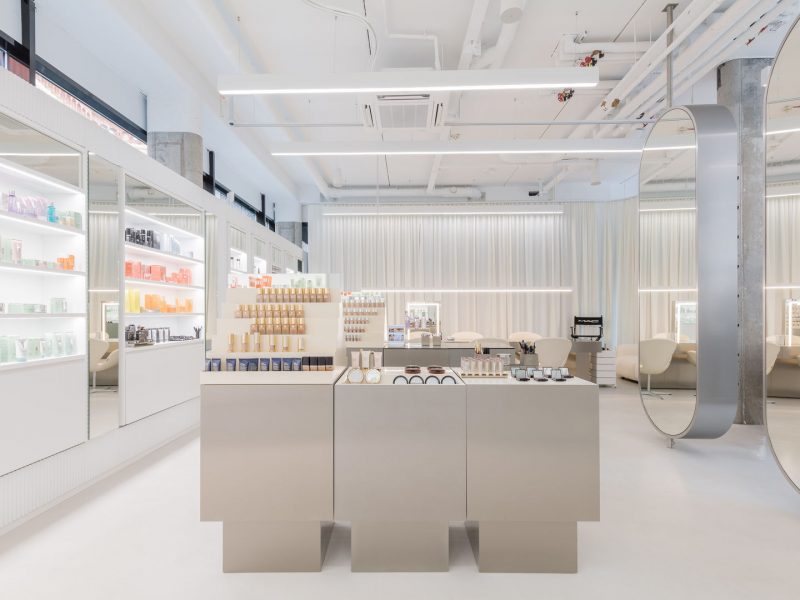
Zalando Beauty Studio, Berlin, Germany
Off-White Miami Flagship
Fashion designer and streetwear icon Virgil Abloh has redesigned Off-White brand’s Miami flagship to flex into a multipurpose event and fulfilment center when not in regular retail mode. The space’s new design navigates the challenges of reimaging the physical brand space as the popularity of e-commerce, accelerated by the pandemic, grows.
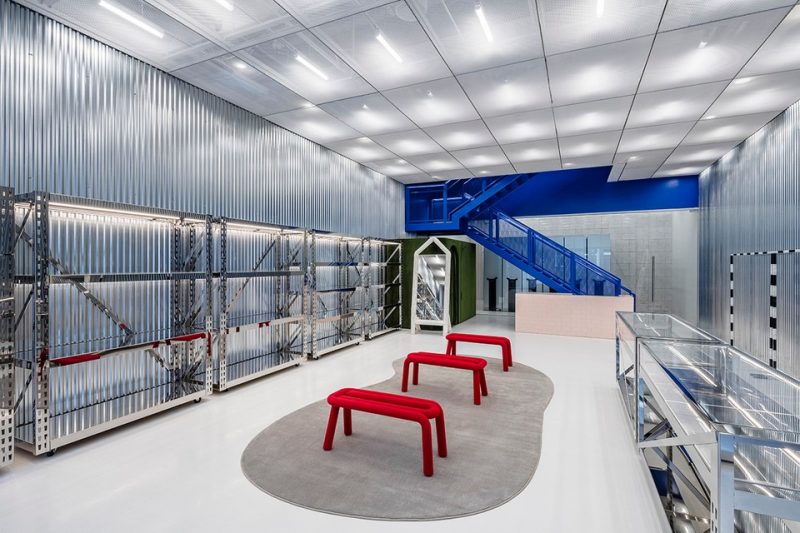
Off-White Flagship, Miami, FL
RestaurantNews: Chester’s Chicken Debuts Store Redesign At Three New Locations
Chester’s Chicken, the cult-favorite fresh fried chicken quick-service restaurant concept with more than 1,200 locations and over 50 years of success, is introducing its first store redesign in nearly 20 years at three new locations – Durant, Oklahoma; Monroe, Louisiana; and Elk Grove Village, Illinois. The new look features a fresh color palette, updated menu boards, and modern architectural and interior brand elements throughout – designed to create a better connection between the customer and Chester’s famous fried chicken, prepared fresh in store throughout the day.
The elevated in-store experience is the next phase of Chester’s brand refresh, following the 2020 launch of the company’s new website with an enhanced library of marketing and training tools for franchisees, as well as a new, simplified logo that focuses on the lovable Chester the Chicken mascot. Within the past year, Chester’s has also introduced new branded packaging and overhauled its digital menu board design. Read more here.
Fluid Movement: Modular seating uses form to create function
With its ability to transform to meet a variety of needs, modular seating has become a great solution for hotels seeking a stylish and economical way to accommodate evolving guest needs. Read more here.
Daniel Robinson Joins NELSON Worldwide as Studio Leader, Mixed-Use
NELSON Worldwide welcomes Daniel Robinson, AIA, NCARB, as Studio Leader of the Mixed-Use/Office practice. A seasoned professional with more than 30 years of experience in leading workplace, mixed-use, municipal, K-12, higher education and federal project types, Robinson will build and nurture client relationships and lead project teams to deliver superior service to existing and new clients.
A highly-skilled leader and mentor, Robinson will support and guide junior staff and oversee project performance to ensure client satisfaction and alignment with NELSON’s brand mission. Fueled by a strong belief in a service-oriented approach to management, he brings to the firm a demonstrated success in building positive, high-performing teams united in a common goal. Robinson will also enhance the firm’s presence across the country through extensive experience developing and executing strategic marketing plans, business development activities, operational standards and best practice policies to increase market share.
Robinson received a Bachelor of Environmental Design (BEnvd) from the University of Colorado Boulder and an Associate’s degree in architecture from Los Angeles Pierce College. Robinson operated as Architect-of-Record for the first LEED Gold Middle School in North Carolina, and has worked internationally in Malaysia and Puerto Rico.
Design Without Borders – The Universal Language of Creating Experiences
There are many things in this world that transcend boundaries, like art, literature, human rights, science, food, the environment, and emotions. While I count many of these among my passions, I’d like to focus on one – design.
Imagine the chaotic, high-energy atmosphere of a store compared to the respectful, serene healing spaces of a doctor’s office. At first glance, they might seem worlds apart, but look closer, and you’ll find that design – specifically human-centered design – is the bridge that connects them.
Human-centered design isn’t confined to one industry or another; it’s a universal language that enhances the human experience no matter the location, application, or size of a space. Let’s talk about some commonalties:
The Art of Creating Experiences
Human-centered design is all about creating experiences that put people…humans… at the epicenter of the experience. Whether you’re stepping into a captivating retail space, enjoying a relaxing stay in the hospitality sector, optimizing your workspace for productivity, or seeking wellness in a healthcare facility, the essence remains the same. It’s about making people’s lives better by delighting, informing, and engaging them and their unique needs. It’s about designing environments that heal, guide, uplift, or fuel productivity.
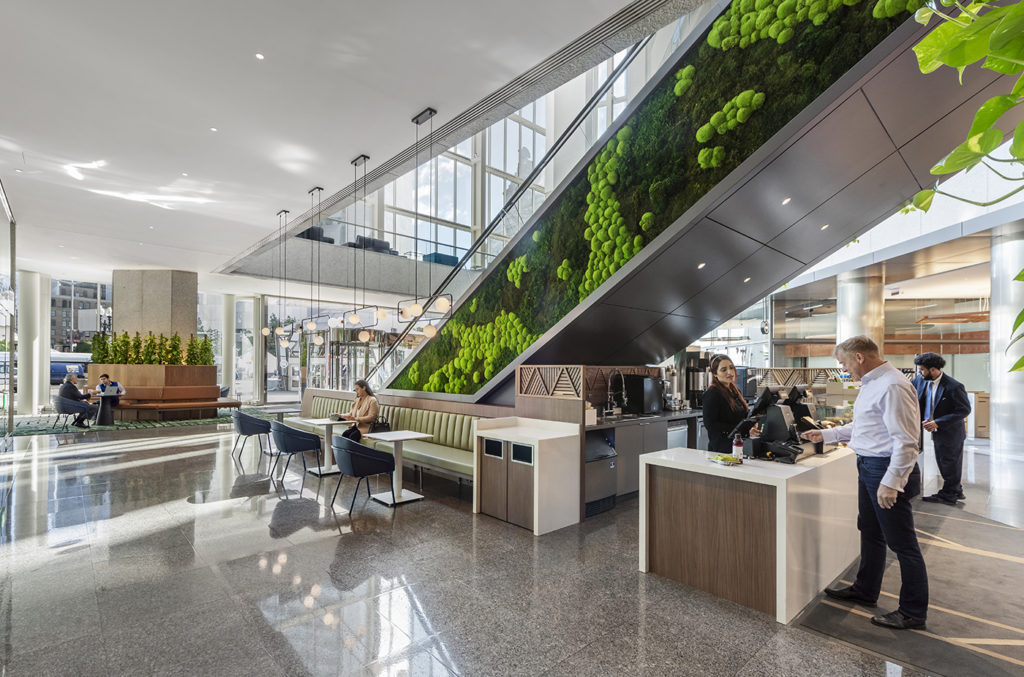
One Financial, Boston
Personalization and Human-Centered Design
Personalization is a fundamental component of design, enabling the customization of the experiences to individual preferences and needs. Brands that incorporate personalization into the design of their experiences see a significant 10-20% increase in satisfaction. This trend is evident across various industries, illustrating the shared human desire for recognition and individualism in a “me”-centric world.
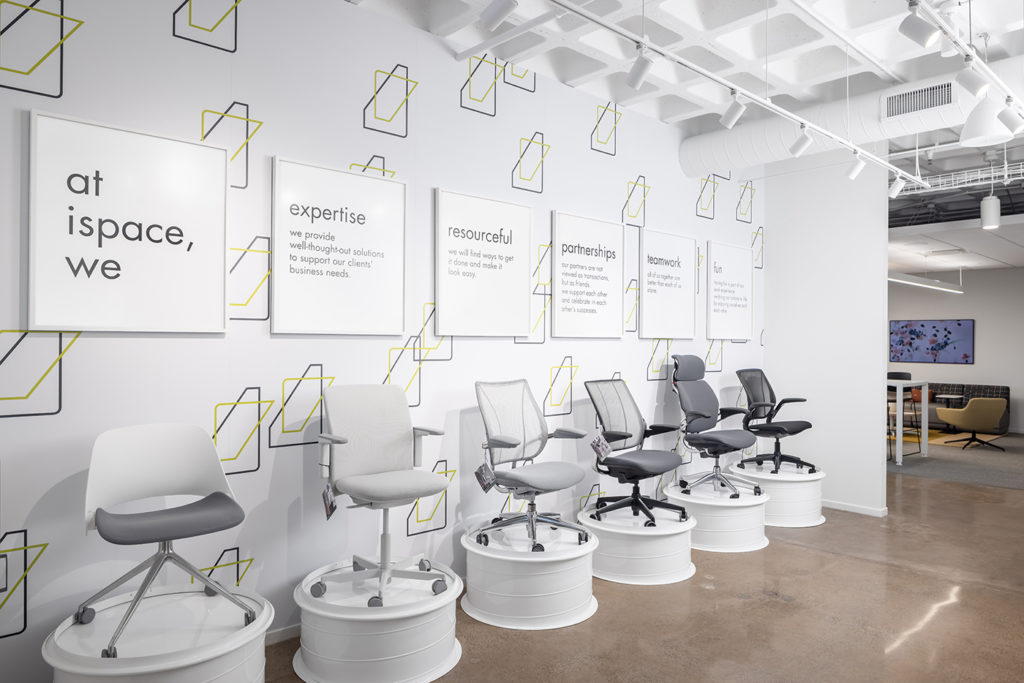
ispace, Minneapolis
Seamless Journeys and Wayfinding
Have you every struggled to navigate a hotel, searched for the restrooms in a workplace, been lost in a store, or been challenged to find your way around a hospital? Effective wayfinding ensures visitors can effortlessly navigate spaces, whether they’re hunting for latest gadget, on their way to a doctor’s appointment, or navigating the new hotel property where they’ll spend their vacation week. According to the International Sign Association, a well-designed wayfinding system reduces confusion and stress levels, enhancing the overall user experience.
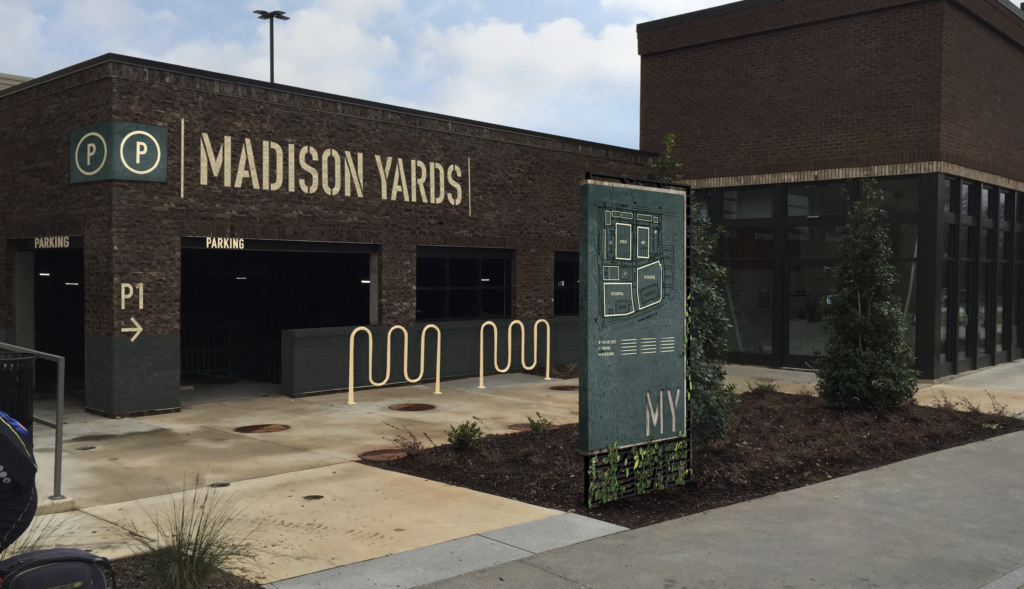
Madison Yards, Atlanta, GA
Tech as an Enabler
Technology has transformed from a simple tool to an essential part of our everyday lives. It’s the thread that ties us to our modern world, shaping our global experiences and interactions. This tethering of humanity to technology is a fundamental aspect of design; we rely on it as our primary source of information, entertainment, and communication. How tech is integrated into the experience can and should range from loud and visible to calm and discovered.
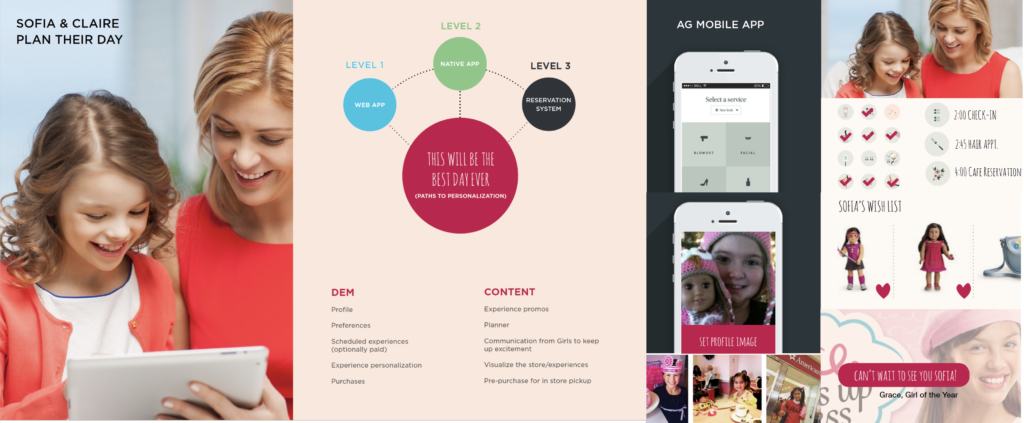
American Girl, Various Locations
The Power of Cross-Collaboration
In today’s interconnected world, it’s increasingly clear that collaboration across disciplines is essential to drive design innovation. Designers, architects, and strategists from all sectors bring distinct perspectives, sources of inspiration, and best practices, opening channels of communication and sharing that unlock the potential for growth, innovation, and positive change. This collaborative dynamic is a testament to the versatility of design principles that prioritize people at the center of every experience, sparking new, exciting possibilities that can shape a brighter, more connected future.
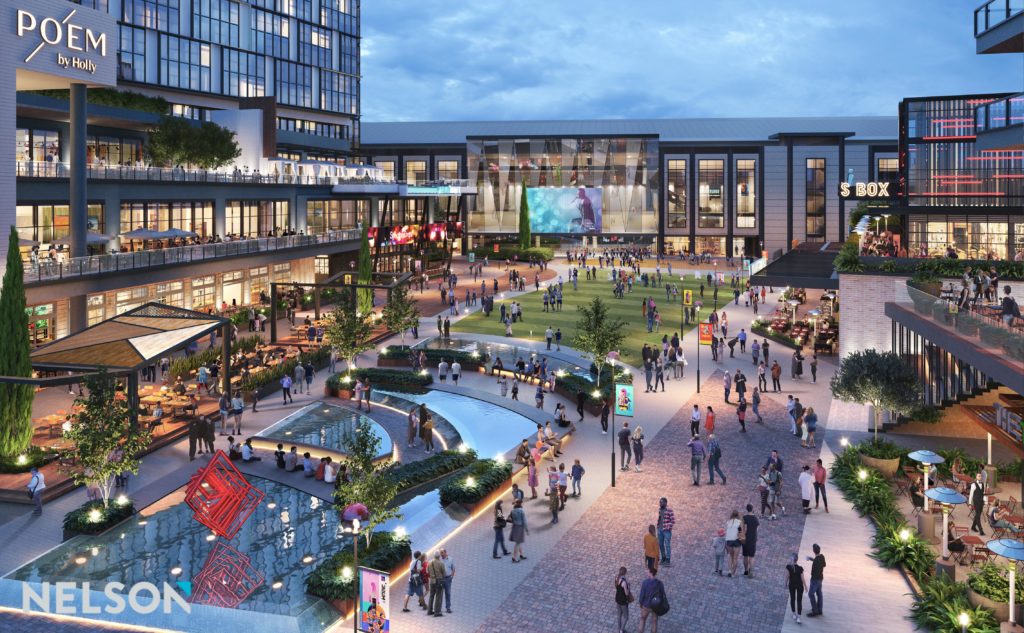
The Gathering at South Forsyth, Alpharetta, GA
As a collective design community, we share a fundamental truth that transcends the boundaries of our individual industry sectors: we have more similarities than differences when it comes to creating, designing, and building experiences that are not only brand relevant but also engaging for us – humans. Whether we’re optimizing workplaces, shaping healing healthcare spaces, crafting relaxing hospitality getaways, increasing productivity in a warehouse, or shaping retail, the core principle remains constant. It’s about putting people, their needs, and their emotions at the center of our creative process. This shared commitment to enhancing the human experience unites us in a common mission, as the universal language of design thrives on its ability to inspire, innovate, and transform the world around us.
5 Key Takeaways from ShopTalk 2019
The fourth year of Shoptalk in Las Vegas has come and gone. Running from March 3rd-6th, this year’s event sold out at 8,400 attendees. Similar to many retail conferences today, Shoptalk is heavily rooted in e-commerce and customer experience and if you’re interested in direct-to-consumer startups as week as big-name retailers, this is the conference for you.
So, if you’re wondering if you should attend next year’s event or just want to know more, we’ve got you covered. Here are 5 key takeaways from Shoptalk 2019:
1. Stores Must Become the Playgrounds of Retail
Something that has become obvious in recent years is that physical retail is not dead. Now, more than ever “people are striving for human connection,” explained Jocelyn Wong, CMO of Lowe’s Home Improvement, during the “New Brand-Retailer Relationship” session. To create these connections, retailers, both traditional and digitally native, must consider developing store environments that are more immersive, appealing and engaging. It’s has been proven that more revenue is generated through in-store purchases than any other selling channel, so why not elevate the physical space to increase these sales even further? People want unique experiences and a place to play, engage and trial – so give them what they want.
2. Partner Up to Expand Your Reach
Retail partnerships and brand collaborations are on the rise and the more they occur, the more benefits they prove to hold for brands – both new and old. Many retailers are starting to realize they can learn from one another and can gain both value and consumer reach. In a session entitled “New Retail Experiences,” Neela Montgomery, CEO of Crate & Barrel explained how the beloved lifestyle brand, recently collaborated with the digitally native furniture subscription start-up, Fernish. “The Rent-the-Runway of Sofas” was able to showcase their innovative, new platform to a potentially new audience of furniture-lovers, while Crate & Barrel added a new selling (or in this case, renting) channel, adding a layer of flexibility to the brand and expanding its product reach even further by offering up their products at a lower point of entry.
3. Become More Authentic by Marrying Data and People
Consumer data was a hot topic at this year’s event and in today’s market it’s crucial for companies to utilize data in order to gain customer insight. As data continues to play a large role for most brands, it’s imperative that retailers understand how to use it to the full potential. In the session “Delighting Customers through Personal Interactions,” President and COO of Stitch Fix, Mike Smith explained the importance of using data while staying authentic with consumers. He shared how the brand employs hundreds of data scientists, but that the data they pull would ultimately have no true influence without the input of the thousands of stylists they also employ. Data may reveal some powerful things, but it’s important to remember that behind that data are real people with thoughts and feelings looking for authentic and engaging experiences.
4. Try Something New or Get Left Behind
This year’s conference was a good reminder of why it’s important for legacy retailers not to get content with the status quo. Today consumers are more comfortable with the idea of brands trying something new – a fail-fast mentality that keeps brands motivated to experiment and innovate to keep both their environments and experiences fresh. From AI to social media, its now easier than ever to try something new. In the session “Facebook, Building Shopping Experiences for the Changing Consumer,” Mark Rabkin, VP, Ads & Business Platform Facebook explained how Dick’s Sporting Goods recently began using digital ads over the 2018 holiday season. As a result, the company reached record metrics for itself – and within Facebook advertising. This is just one example of how traditional retailers can still make their mark and get ahead in the game by adjusting and updating their digital strategies.
5. Empower and Leverage Your Retail Associates
Full swing into the digital age it may seem hard to believe that people are craving human connection, but as already mentioned, this is very true. To provide this specific human connection retailers need to shift the role of store associates into brand ambassadors, empowering their feet on the ground to share and embrace the brand’s values, mission and story. Don’t make key decisions without gaining associate insight and buy-in. There is no greater brand advertisement than your people – provide opportunities for them to start a dialogue and engage with shoppers on a personal level. Your environment can be memorable for shoppers, but your associates are the ones that will make the experience meaningful.
Overall, I left Shoptalk 2019 with some great insight and inspiration. While over the years, the brand names have gotten bigger and the audience has grown, I challenge ShopTalk to focus more on disruption in the coming years and less on simply checking off the ‘big brand names’. I think retail could learn more from out-of-industry insights and learnings from disruptive start-ups to keep the thinking fresh and the approach innovative.
**Click here to view and download some of this year’s ShopTalk presentations.

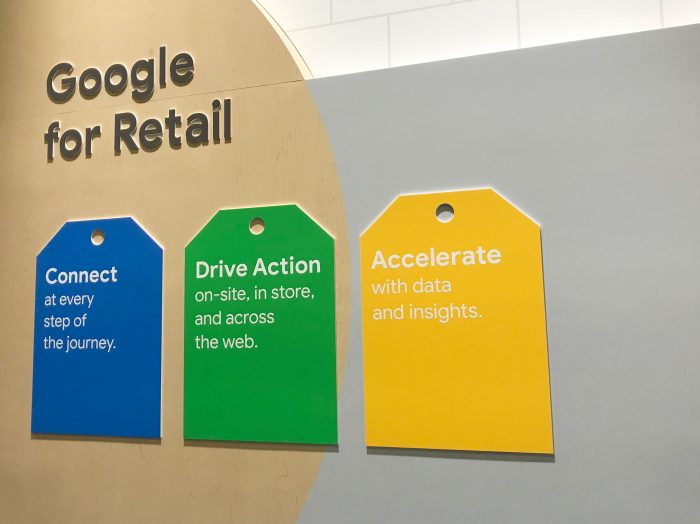
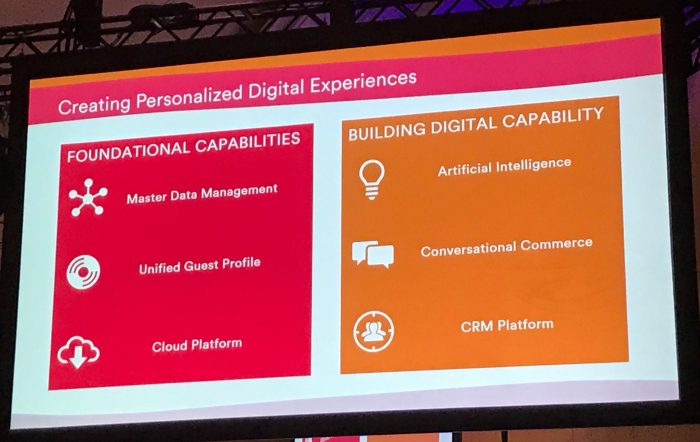
Yankee Candle
Yahoo!: Chester’s Chicken Debuts Store Redesign At Three New Locations
Chester’s Chicken, the cult-favorite fresh fried chicken quick-service restaurant concept with more than 1,200 locations and over 50 years of success, is introducing its first store redesign in nearly 20 years at three new locations – Durant, Oklahoma; Monroe, Louisiana; and Elk Grove Village, Illinois. The new look features a fresh color palette, updated menu boards, and modern architectural and interior brand elements throughout – designed to create a better connection between the customer and Chester’s famous fried chicken, prepared fresh in store throughout the day.
The elevated in-store experience is the next phase of Chester’s brand refresh, following the 2020 launch of the company’s new website with an enhanced library of marketing and training tools for franchisees, as well as a new, simplified logo that focuses on the lovable Chester the Chicken mascot. Within the past year, Chester’s has also introduced new branded packaging and overhauled its digital menu board design. Read more here.
Adaptability, Comfort, Safety: Bringing back the open office post COVID-19
NELSON Worldwide’s Holly Williamson shares insight with Mann Report on how open offices are crucial for mentorship in the workplace.